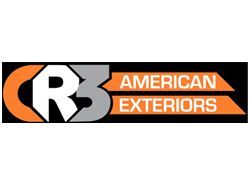How to Create a Franchise Operations Manual

Drawing up a franchise operations manual is a vital step for any franchise organization. This comprehensive document is considered to be a guidebook for both parties of the franchise relationship that directly influences coherence and regimentals throughout all franchise locations. It lays down detailed guidelines regarding management of business and maintaining company standards. In this article, we share tips on developing an efficient and productive franchise operations manual.
Why a Franchise Operations Manual is Essential
A franchise operations manual is necessary for several reasons:
- • Uniformity: A franchise operations manual grants a standardized collection of directions and procedures that prospective franchise owners would have to maintain. This lets the franchise organization sustain consistency throughout all units and be certain that consumers obtain the identical quality of goods and services regardless of the unit they visit.
- • Training: The operations workbook also acts as a training mechanism for prospective franchise owners. It provides them with detailed navigations on operating the enterprise, including everything from daily operational tasks to marketing strategies. Drawing up an extensive manual assists in reducing the learning curve for novice franchise owners and ensuring they clearly understand all aspects of operating the franchised unit smoothly.
- • Quality assurance: The operations handbook outlines the quality policies that franchise owners must meet to sustain company image and customer satisfaction. It defines the aspects and actions necessary to deliver consistent and top-quality goods and services. By drawing up a manual that clearly defines these standards, franchisors can be certain that franchisees are meeting their expectations and sustain the company's reputation.
- • Legal compliance: Franchise operations manuals generally consist of various legal guidelines that prospective franchise owners need to follow. They include guidelines for health and safety, employment laws, and licensing requirements. By mentioning these regulations in the operations document, the corporate office assures that all franchisees are adequately informed and abide by legal requirements, and that in turn reduces the risk of legal disputes for both parties.
- • Scalability: Franchise operations manuals are significant for scaling the franchise organization. Whenever new franchised units are added, the operations handbook grants a blueprint for replication, which is good for consistent growth and expansion. Prospective franchisees can quickly learn how to launch and operate a new location.
Overall, writing a franchise operations manual is necessary for maintaining consistency, providing training, assuring quality monitoring, complying with legal regulations, and enabling scalability within a franchise organization. It acts as a valuable resource for both franchise owners and the parent company, promoting the success and growth of the network.
What to Include in a Franchise Operations Manual

A franchise operations manual is a wholesome guidebook that outlines the standards and procedures necessary for successful functioning of the franchise organization. It acts as a guidebook for franchised enterprise owners to adhere, assuring coherence throughout all units. Take into consideration some significant elements to add in a manual consisting of franchise operations:
- • Introduction: Grant an overview of the franchise organization, its history, mission, and values.
- • Franchise Contact: Include a copy of the signed franchise agreement to mention the judicial regulations and conditions.
- • Organizational Structure: Outline the network's organizational structure, and add the parts and responsibilities of key personnel, like the franchisor, franchise owner, and team of managers.
- • Training Program: Detail the training agenda offered to owners of franchises to assure they understand the operational processes, product line, services, and consumer service benchmarks.
- • Site Selection and Design: Provide directions for selecting and launching a physical location, including criteria for location selection, lease negotiation, area development plans, layout, and navigations in branding.
- • Operations Procedures: Explain in great detail processes for various operational activities, like opening and closing procedures, management of inventory, cash handling, sales, marketing, consumer service, and quality assurance.
- • Product and Service Maintenance: Define the benchmarks for the goods or services offered, including ingredients, suppliers, quality assurance, pricing, packaging, and delivery protocols.
- • Equipment and Technology: Describe the required equipment, software, and technology systems, including their installation, maintenance, troubleshooting, and upgrades.
- • Documentation and Reporting: Specify the documentation and reporting expectations, such as record-keeping procedures, financial reporting requirements, employee files, and compliance documentation.
- • Marketing and Advertising: Provide guidelines for local marketing and advertising initiatives, which contains approved promotional materials, branding standards, digital marketing strategies, and cooperative advertising campaigns.
- • Human Resources: Cover the staff recruitment, employment, onboarding, and training processes for employees, as well as employee relations, performance management, compensation structure, and employment policies.
- • Franchisee Support: Explain the ongoing support services available to franchisees, such as corporate field visits, regular meetings, conferences, newsletters, online resources, and a designated support hotline or email.
- • Franchise Renewal and Termination: Outline the requirements for franchise renewal, termination, and transfer of ownership, involving the conditions, timelines, and penalties involved.
Remember, a manual focusing on franchise operations is required to be constantly reviewed and refreshed in order to reflect modifications in the organization, industry, and legal regulations.
Who Prepares the Operations Manual
Generally, the parent company is the one responsible for drawing up the franchise operations guidebook. He/she could cooperate with brand’s departments, like human resources, financing, and legal, varying on the specific needs of the organization. Overall, it’s the duty of the corporate office to draw up a wholesome guidebook that involves all business aspects of a franchise relationship.
Steps to write an effective franchise operations manual

1. Determine the franchisor-franchisee relationship
Ascertain expectations for interaction and engagement among franchise owners and the franchisor. Establish how support will be provided, mentioning regular meetings, newsletters, and a designated source of contact for addressing concerns.
2. Give detailed outlook on the business procedures and processes
Outline all operational business aspects, such as opening and closing procedures, sales processes, customer service standards, and managing of inventory. Include detailed instructions and leverage visual aids like checklists, flowcharts, and diagrams to enhance clarity.
3. Disclose full information about your brand identity and products
Dedicate a section to outline the brand identity, including the logo, tagline, and color schemes. Explain the brand standards and guidelines, such as leveraging the logo and assuring coherence across marketing materials, signage, and uniforms. Grant comprehensive information regarding the product line.
4. List your business policies clearly
Dedicate a section to quality control standards, including quality of goods or services, cleanliness, and adherence to regulations regarding safety. Mention inspection processes and any necessary certifications for enterprise owners to maintain. Include all business policies that prospective franchisees would need to adhere.
5. Include a separate section for HR related policies and issues
Mention information on hiring processes, employee training, performance evaluations, and disciplinary actions. Involve guidance on creating descriptions of jobs, conducting interviews, and establishing employee relations. Highlight legal requirements and ideal policies for handling human resources issues.
6. Thoroughly review your document
It is an important step. Carefully look through your guidebook to be certain that you have added everything to know regarding the company and a franchised unit. Assure that all information is fresh and relevant.
7. Publish the franchise operations manual
The last thing to perform is to post an operations manual. Publish it in the source that franchised units owners could quickly access and consult any time. Assure that it is easy on the eyes, and well-structured.
Conclusion
Remember, the franchise operations guidebook needs to be comprehensive, yet convenient and simple to focus on and comprehend. Write in plain language and leverage visual aids whenever possible to enhance comprehension. Regularly revise and upgrade the manual to display shifts and modifications in the operations or industry. With a well-crafted manual, owners of franchises could successfully operate their enterprise all while maintaining the integrity and consistency of the company.

Written by
Vasil Gazizulin
Founder of Topfranchise.com
CEO Expedition 2009 - 2014
Author of a book «GROW WITH A FRANCHISE»
of franchise
business
 USA
USA India
India Canada
Canada The UK
The UK Indonesia
Indonesia The Philippines
The Philippines Australia
Australia The UAE
The UAE Saudi Arabia
Saudi Arabia South Africa
South Africa Germany
Germany Pakistan
Pakistan Singapore
Singapore Malaysia
Malaysia









